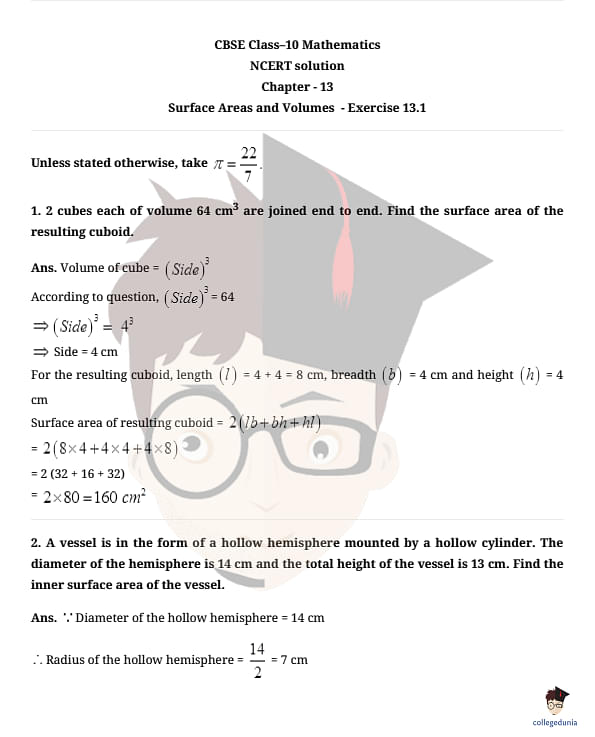Collegedunia Team Content Curator
Content Curator
NCERT Solutions for Class 10 Maths Chapter 13 Surface Areas and Volume Exercise 13.1 Solutions are based on the following concepts:
Download PDF NCERT Solutions for Class 10 Maths Chapter 13 Exercise 13.1 Solutions
Check out the solutions of NCERT Solutions for Class 10 Maths Chapter 13 Exercise 13.1 Solutions








Read More: NCERT Solutions For Class 10 Maths Chapter 13 Surface Areas and Volume
Exercise Solutions of Class 10 Maths Chapter 13 Surface Areas and Volume
Also check other Exercise Solutions of Class 10 Maths Chapter 13 Surface Areas and Volume
- NCERT Solutions for Class 10 Maths Chapter 13 Surface Areas & Volumes Exercise 13.2 Solutions
- NCERT Solutions for Class 10 Maths Chapter 13 Surface Areas & Volumes Exercise 13.3 Solutions
- NCERT Solutions for Class 10 Maths Chapter 13 Surface Areas & Volumes Exercise 13.4 Solutions
- NCERT Solutions for Class 10 Maths Chapter 13 Surface Areas & Volumes Exercise 13.5 Solutions
Also Check:
Also check:





Comments